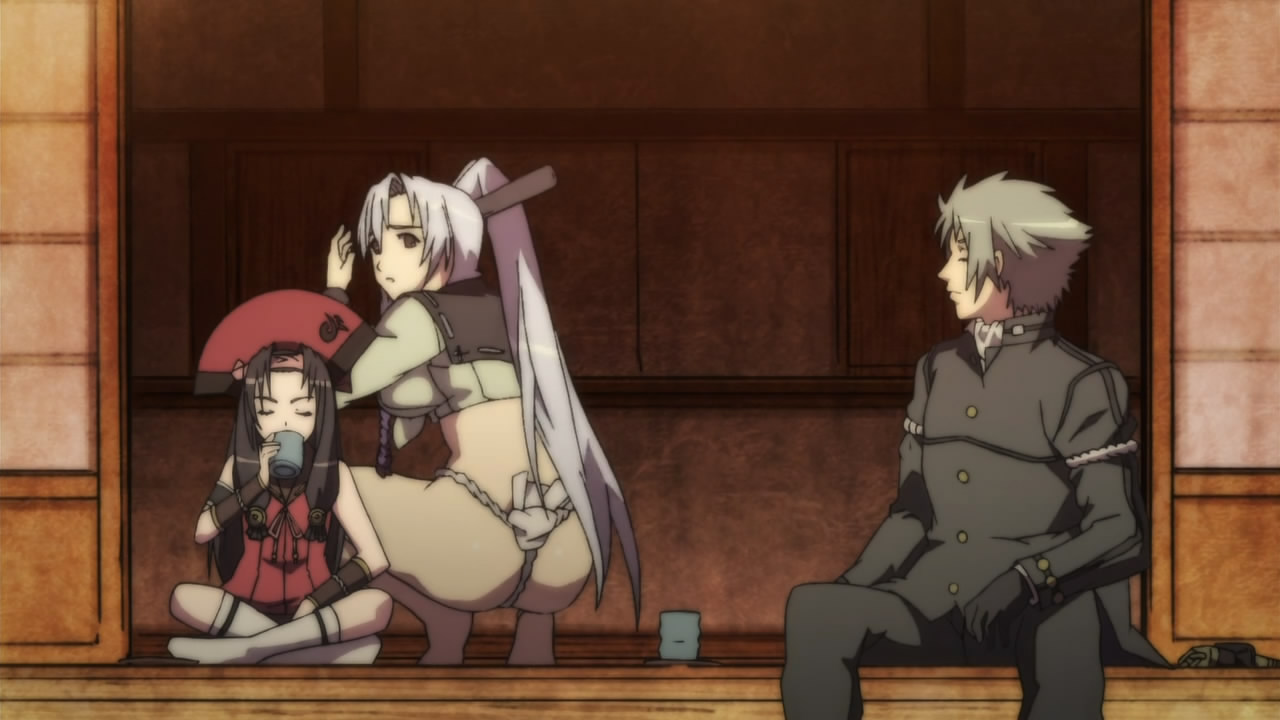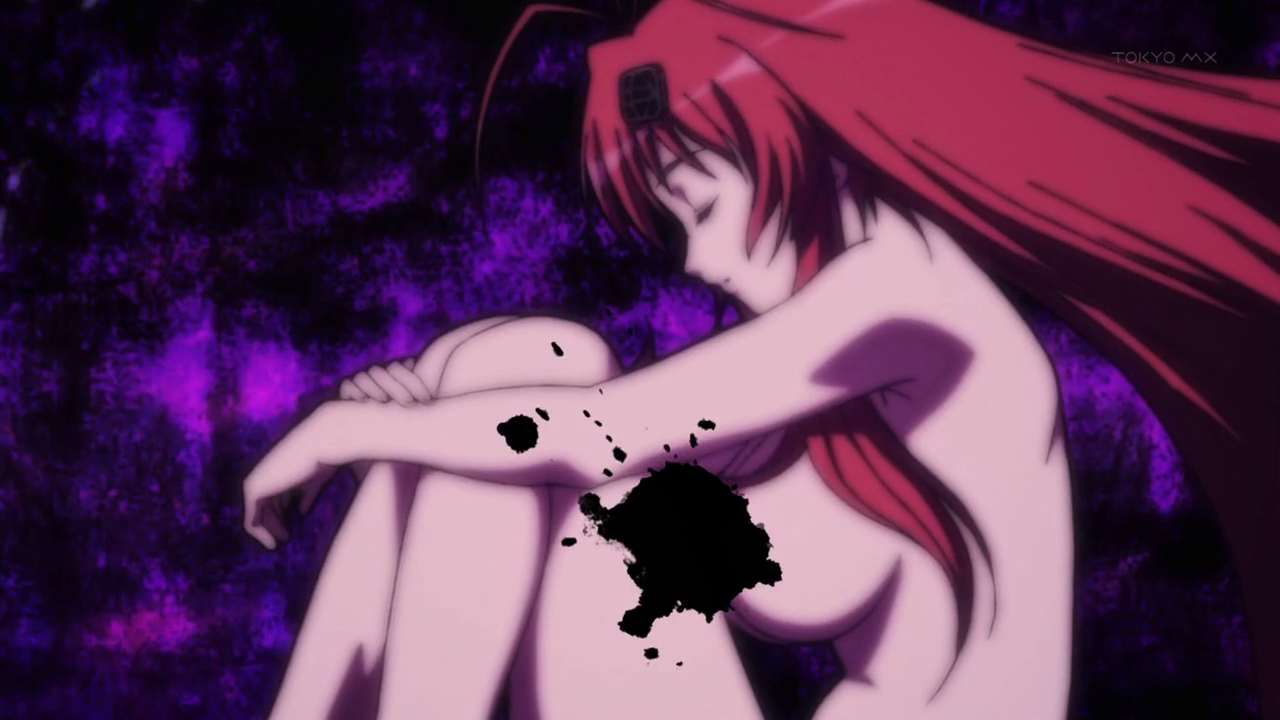At first glance, Hyakka Ryouran Samurai Girls has a lot going against it. It’s based on a figure series which depicts various historical samurai as busty girls. It’s being animated by ARMS, who are responsible for such shows as Queen’s Blade and Ikkitousen. AT-X will be broadcasting an uncensored version, with plenty of nudity to go around. By all accounts, this should be another brainless fanservice-fest that only the really, really hardcore otaku will enjoy.
Or is it?
The old adage “don’t judge a book by its cover” is applicable here. I actually watched the first episode of Samurai Girls and enjoyed it. Why? Well, despite the conclusions some of you have drawn from my HOTD hatred, I actually like fanservice-heavy shows. I’m a healthy, heterosexual guy in his mid-twenties… why WOULDN’T I enjoy staring at nubile samurai women parading around in skimpy outfits? What I don’t appreciate is when such shows tack on a paper-thin plot into which the writers put no thought or effort. Just because a show has bouncing boobs doesn’t mean the story has to suck!
And you know what? Samurai Girls actually has a decent story. It’s set in an alternate version of the present day, where the Tokugawa Shogunate still rules over a feudal Japan. The main protagonist, Yagyuu Muneakira, is tranferring to a military academy at the base of Mount Fuji. There he accidentally meets Sanada Yukimura and Gotou Matabee, two female samurai who are opposing the ruling Shogunate. After a nasty run-in with the school’s Shogun-endorsed militant student council, Yagyuu casts his lot with the rebels, setting the stage for a feudal battle of shifting loyalties in a high-school setting.
This intriguing story is only one aspect Samurai Girl‘s enjoyability. The tasteful fanservice, gorgeous art style and memorable character designs make this show is a visual treat, and the writing is serviceable enough that you won’t be bored out of your skull waiting for the next ecchi scene. Granted, there are still some big flaws… but this show has definately piqued my interest.
Find out more after the break.
Here’s the breakdown of the good, the bad and the sexy.
What I Liked
Inkwash Art: The highlight of Samurai Girls is easily the unique art style, which mimics traditional Japanese ink and wash painting. The backgrounds look like Chinese watercolors and the characters are drawn with thick brushed outlines, giving the impression that you’re watching some sort of surreal animated Sesshū Tōyō painting rather than an anime. Occasionally, ink even splatters across the screen, either to facilitate a scene transition or creatively censor the nudity.
Competent Protagonist: This show has strong romantic comedy and harem elements. Usually, the male protagonist associated with these genres is weak and pathetic, in the vein of Love Hina‘s Keitaro. In Samurai Girls, however, Yagyuu Muneakira is actually *gasp* a competent and capable man, plus a samurai to boot! I know I shouldn’t be so impressed by this, but after years of nothing but limp-wristed males cowering before their abusive tsundere girlfriends, I can’t help but be overjoyed.
Restrained Fanservice: I can’t believe I’m saying this, but the fanservice in this show was actually tasteful and restrained, at least when compared with the likes of HOTD or Ladies vs. Butlers. The inkblot censoring makes this no more risque than your average ecchi title. Furthermore, the leading ladies suffer no loss of dignity… even when baring their assets, they manage to remain strong characters with forceful personalities. I can only hope Samurai Girls will continue this trend and avoid marginalizing its girls into mere sex objects.
What I Hated:
Romcom Archetypes: Samurai Girl‘s plot is an odd mix of feudal samurai drama, highschool-based romantic comedy and fanservice. I also noticed harem elements, though I’m not sure if this will turn into a full-fledged harem show. The romcom scenes were painful to sit through, especially since they followed all the tired cliches to a T. Male protagonist clumsily stumbling on a group of disrobed girls? Check. Making the situation worse by unintentionally insulting the loli’s breast size? Check. Girls comically throwing debris at the accidental sex offender while accusing him of being a pervert? Check. Ugh, do we really have to go through this same old song and dance?
 Awkward Exposition: Let’s do a bit of roleplaying. You’re a young samurai girl in hiding, planning a conspiracy to overthrow the Tokugawa Shogunate that rules Japan. You meet a strange male samurai who, after seeing you naked, demonstrates his martial superiority be effortlessly disarming you. You think he might be a potential ally, but you don’t even know his name yet. What would you do?
Awkward Exposition: Let’s do a bit of roleplaying. You’re a young samurai girl in hiding, planning a conspiracy to overthrow the Tokugawa Shogunate that rules Japan. You meet a strange male samurai who, after seeing you naked, demonstrates his martial superiority be effortlessly disarming you. You think he might be a potential ally, but you don’t even know his name yet. What would you do?
A. Get to know him better, and casually try to learn his allegiance and opinion of the Shogunate.
B. Try to demonstrate to him how evil the Shogunate is by revealing some great atrocity or crime they committed.
C. Immediately tell him your complete master plan for toppling the Shogunate, and hope he is impressed.
If you chose option C, congratulations! You’re as stupid as Sanada! Honestly, the only reason they shoehorned in this clumsy bit of dialogue is to explain Sanada and Gotou’s political position, and set up Yagyuu’s decision to join them later. The whole thing stretched credulity beyond belief.
Here’s another example.
“Y-You’re Yagyuu Muneakira? F-From the Yagyuu family that has been teaching swordsmanship to the family of the Shogun for generations? You’re still going against the Student Council even though you’re in that position?”
Because that’s how people talk in real life, right? I, Jon Snyder, the chief editor of Project Haruhi and a college student who is studying Japanese language and culture, certainly think so!
Overall Thoughts:
Samurai Girls is a bit of a mixed bag for me. The art style is gorgeous, the characters are likable enough and the plot is intriguing. However, I can’t help but feel it was dragged down by indulging in certain romantic comedy cliches. Granted, the impact of these cliches was somewhat lessened by the strong male protagonist and frenetic pacing, which prevented the show from dwelling on them for too long. Still, the fact that they were included in the first place is a bit disheartening. That, combined with a few instances of awkward dialogue and exposition, kept me from giving this show a perfect Picard score. I think Samurai Girls has a lot of promise, but it needs to ramp up the originality of the writing to match the unique art style. For the time being, though, this show has definitely caught my interest. The fall anime season is off to a promising start!



